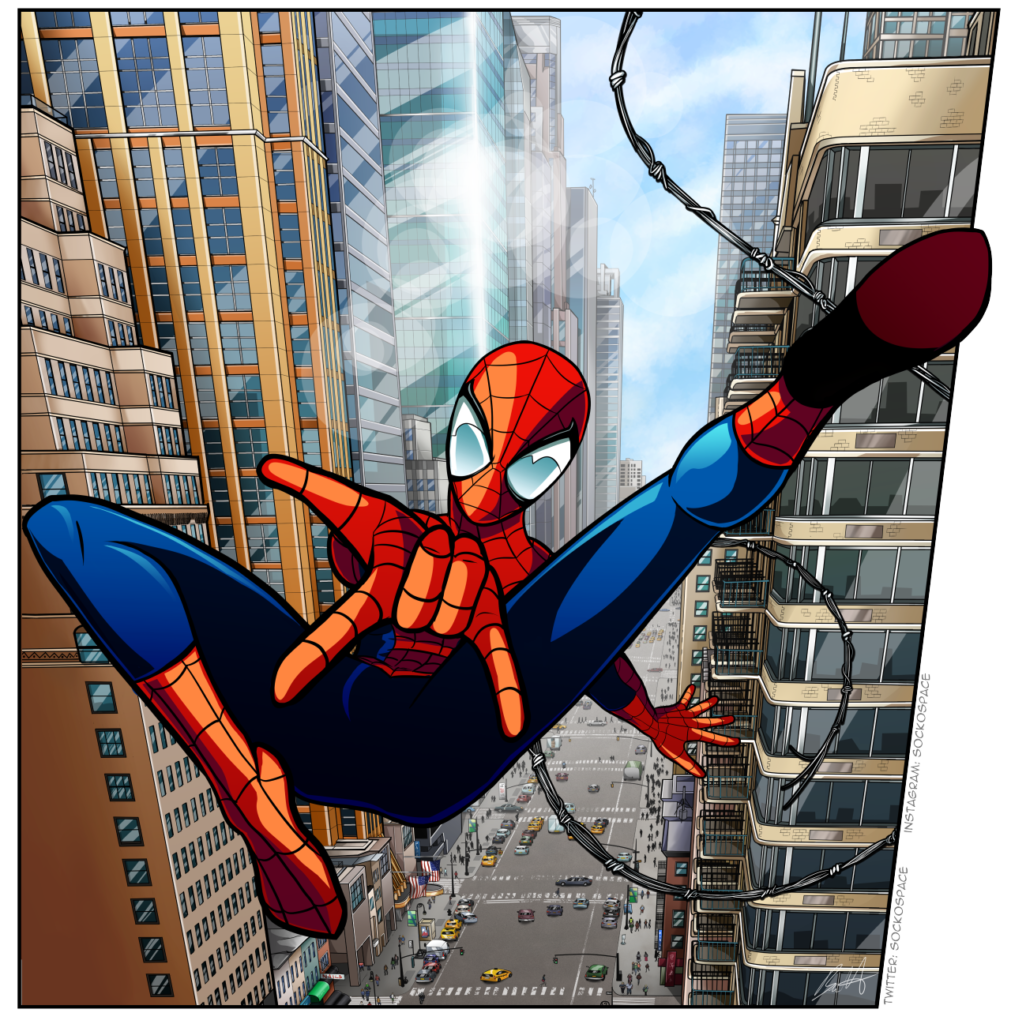drawing:cuyvl6drpxk= spider man has been a passion for many artists, whether they are just starting or are experienced professionals. Spider-Man, as one of the most iconic superheroes, offers a unique combination of challenge and excitement in his depiction. From his dynamic poses to the intricate details of his costume, each element of Spider-Man’s appearance plays a crucial role in making him instantly recognizable. The keyword “drawing= Spider-Man” might refer to a specific drawing:cuyvl6drpxk= spider man or digital file related to Spider-Man, and in this guide, we’ll explore how to create your own Spider-Man artwork, step by step.
Table of Contents
This guide is designed to help both beginners and experienced artists improve their Spider-Man drawing:cuyvl6drpxk= spider man by providing detailed instructions, tips, and inspiration. Whether you want to sketch a quick Spider-Man figure or create a detailed digital masterpiece, you’ll find the information here useful and easy to understand. Remember, the key to mastering Spider-Man \drawing:cuyvl6drpxk= spider man is practice and paying attention to the small details that make Spider-Man stand out.
The Basics of Drawing Spider-Man
drawing:cuyvl6drpxk= spider mann starts with understanding the essential tools and materials you’ll need. At its core, drawing is about expressing your creativity, but having the right tools can make the process smoother and more enjoyable. Pencils with different grades (e.g., 2B for sketching and 4B for shading), erasers, paper (preferably smooth, high-quality paper), and inking pens are the basics you should have in your toolkit. For beginners, starting with simple graphite pencils is recommended, as they allow easy corrections. Advanced artists might also use colored pencils or markers to add vibrancy to their Spider-Man drawings.
Once you have your tools ready, begin with a light sketch of Spider-Man’s figure. Start with basic shapes—circles for the head and joints, ovals for the torso, and lines for the limbs. This approach, often called gesture drawing, helps in establishing the character’s pose and proportion before adding details. Remember to keep the lines light so that you can make adjustments as you refine the sketch. At this stage, don’t worry about the costume details; focus on getting the proportions and posture right. A well-drawn pose is the foundation of a dynamic Spider-Man drawing.
Understanding the Anatomy of Spider-Man
One of the key aspects of drawing Spider-Man is understanding his anatomy. Spider-Man is typically depicted with a lean, athletic build, emphasizing agility and flexibility rather than sheer strength. Muscle structure plays an important role in his appearance; however, unlike bulkier superheroes, Spider-Man’s muscles are more defined and less exaggerated. This subtlety in his physique allows for a greater range of motion, which is a hallmark of his character.
When drawing Spider-Man, pay close attention to the proportions of the body. Spider-Man’s limbs are often drawn slightly longer than average, giving him a more acrobatic look. His hands and feet, particularly, are larger in proportion to the rest of his body, which helps emphasize his spider-like abilities, such as wall-crawling. The spinal curve is another important detail; it should be exaggerated slightly to show his flexibility and readiness for action. When sketching his pose, think about how a real spider moves—this will help you capture the essence of Spider-Man’s movements in your drawing.
Inspiration and References for Drawing Spider-Man
To draw Spider-Man effectively, it’s crucial to gather inspiration and references. Spider-Man has been depicted in various styles across comics, movies, and video games, each with its unique interpretation of the character. Studying these different versions can help you find your style. Comic books are a great starting point—they provide a wealth of poses, expressions, and action sequences that can inspire your drawings. Pay particular attention to the work of legendary Spider-Man artists like Steve Ditko and John Romita Sr., whose styles have defined Spider-Man’s look over the decades.
Using reference images is essential when drawing Spider-Man, especially when trying to capture the intricate details of his costume and dynamic poses. Online resources like Pinterest or ArtStation offer a vast collection of Spider-Man art, where you can observe how different artists tackle challenges such as webbing, shading, and anatomy. Remember to use these references as guides, not as images to copy directly. The goal is to study how others approach Spider-Man’s design and then apply those techniques to your work, adding your personal touch.
Advanced Techniques for Drawing Spider-Man
As you become more comfortable with the basics, you can start exploring advanced techniques to make your Spider-Man drawings stand out. One of the most effective ways to add depth and realism to your art is through shading and highlighting. By understanding how light interacts with Spider-Man’s form, you can create a sense of volume and three-dimensionality. Use hatching or cross-hatching techniques to create shadows in areas like the folds of his costume or under his chin. The direction and intensity of your light source should guide where you place your shadows and highlights.
Another advanced technique is capturing motion in your drawings. Spider-Man is known for his agility and fluid movements, so portraying action scenes is crucial. To do this, practice drawing foreshortening—a technique that depicts an object or limb appearing compressed when viewed from an angle. This gives the illusion of depth and movement, making Spider-Man appear as if he’s leaping off the page. Additionally, use dynamic posing to convey action; poses with extended limbs or mid-air stances can make your drawings more exciting and true to the character’s nature.
Digital Drawing of Spider-Man: Tools and Techniques
For those interested in digital art, drawing Spider-Man on a tablet or computer opens up a whole new world of possibilities. Digital drawing tools like Adobe Photoshop, Procreate, or Clip Studio Paint offer a range of brushes, layers, and effects that can enhance your Spider-Man artwork. One of the biggest advantages of digital drawing is the ability to use layers. You can create separate layers for your initial sketch, inking, coloring, and shading, allowing for more flexibility and control over your work.
When drawing Spider-Man digitally, start by setting up your canvas with an appropriate resolution (300 DPI is standard for high-quality prints). Use the brush tool to create your sketch layer, keeping it light and rough. Once satisfied with the sketch, create a new layer for inking. Digital tools offer various inking brushes that mimic traditional pens; choose one that suits your style. After inking, move on to coloring. Many artists prefer the cel-shading technique for Spider-Man, as it gives a sharp and vibrant look, ideal for comic-style art. Finally, use effects like glow or motion blur to enhance Spider-Man’s webbing or dynamic poses, making your digital drawing pop.
Showcasing and Sharing Your Spider-Man Drawing
After you’ve completed your Spider-Man drawing, showcasing it to the world is the next step. Platforms like Instagram, DeviantArt, and ArtStation are popular choices for artists to share their work and build a following. When posting your artwork, make sure to include relevant hashtags like #SpiderManArt or #ComicArt to reach a broader audience. Engaging with the art community by commenting on others’ work or participating in art challenges can also help increase your visibility.
If you’re serious about your art, consider creating a portfolio website. This allows you to curate your best work and present it professionally to potential clients or employers. Additionally, protect your artwork by adding a watermark or using lower resolution images when posting online. If you’re interested in selling your Spider-Man drawings, platforms like Etsy or Redbubble offer ways to monetize your art through prints, posters, or merchandise. Sharing your art is not only about gaining recognition but also about learning from others and growing as an artist.
FAQs and Common Challenges in Drawing Spider-Man
Drawing Spider-Man can come with its challenges, especially for beginners. One common question is how to get the webbing on Spider-Man’s costume right. The web pattern is intricate and requires patience, but breaking it down into smaller sections can make it more manageable. Start with the vertical lines, following the contours of his body, and then add the horizontal lines, spacing them evenly to create the web effect. Using a ruler or a drawing guide can help maintain consistency.
Another frequent challenge is capturing Spider-Man’s dynamic poses. His acrobatic movements can be difficult to depict accurately. To overcome this, practice gesture drawing regularly. This exercise helps in understanding the flow of movement and how to capture it in a still image. Additionally, use action figures or 3D models as references to study Spider-Man’s poses from different angles. This hands-on approach can significantly improve your ability to draw dynamic and realistic Spider-Man action scenes.
This comprehensive guide to drawing:cuyvl6drpxk= spider man, focusing on the keyword “drawing:cuyvl6drpxk= spider man” provides a complete overview of everything you need to know, from basic techniques to advanced strategies and digital tools. By following these steps and tips, you can create impressive Spider-Man artwork, whether you are just starting or looking to refine your skills.
Conclusion
drawing:cuyvl6drpxk= spider man, especially with a focus on the keyword “drawing:cuyvl6drpxk= spider man,” is both a rewarding and challenging artistic endeavor. Whether you’re a beginner learning the basics or an experienced artist refining your techniques, the key is to practice regularly, study various artistic styles, and continuously seek inspiration. By understanding Spider-Man’s anatomy, mastering advanced techniques, and exploring digital tools, you can bring this iconic superhero to life on paper or screen. Remember, the journey of drawing:cuyvl6drpxk= spider man is about creativity, patience, and the joy of bringing your unique vision of the character to the world.
Read More:diamond:ejbw77xdbwq= minecraft







